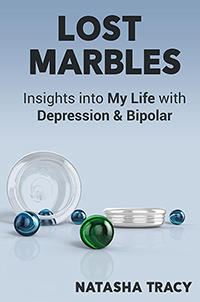A new and unique sleep medication is typically welcomed by the mentally ill population because those with mental illness (particularly mood disorders) tend to also have sleep problems like insomnia. However, a sleep medication that works in a unique way hasn’t been introduced in years: util lemborexant (Dayvigo), that is. Lemborexant is an insomnia medication that works on orexin receptors, which in and of themselves are actually a new-ish discovery. Read on for how lemborexant could be useful and why you might even consider switching.
(Note: This post is for informational purposes only. It should not be considered medication advice. It is also not an ad and has not been sponsored by anyone.)
What Is Dayvigo, Lemborexant?
Lemborexant, brand name Dayvigo in Canada and the US, is indicated for insomnia characterized by difficulties with sleep onset and/or sleep maintenance. In other words, if you can’t get to sleep or stay asleep, this medication may help you.
Lemborexant is considered a dual orexin antagonist. This means that it downregulates orexin in the brain. Orexins are neuropeptides that regulate the sleep-wake cycle, feeding and other behaviors; orexins promote wakefulness. So, if you downregulate orexins, you decrease wakefulness. This can help induce sleep.
Why Is Sleep Medication Lemborexant (Dayvigo) Unique?
Other existing sleep medications like eszopiclone (Lunesta) or zolpidem (Ambien) are in a class called sedative/hypnotics and do not target orexins. Sedative/hypnotics are more similar to benzodiazepines and tend to upregulate gamma-aminobutyric acid (GABA), which decreases in neuronal excitability that, in turn, produces sedative and hypnotic effects.
Basically, sedative/hypnotics make you feel tired, whereas an orexin antagonist makes you feel less awake. I know that sounds like the same thing, but to your brain, it isn’t. This means sleep is initiated and maintained differently.
One of the main issues with sedative/hypnotics is they have a high potential for abuse and addiction. This makes them somewhat dangerous, particularly in a population like those with bipolar disorder, which often abuses substances. Lemborexant is considered to have a potential for abuse as well, and so is a schedule IV drug in the US, but in practice, it may be less so than sedative/hypnotics — only time will tell.
Tips for Using Lemborexant, Dayvigo
If you’re considering using lemborexant, make sure you discuss any and all concerns with your doctor.
Also:
- Taking lemborexant with high doses of a sedative hypnotic is dangerous.
- However, you can cross-taper lemborexant with a sedative/hyponic. This means you can decrease your sedative/hypnotic while you onboard lemborexant. (Make sure you discuss this dosing schedule with your doctor if you’re interested in it.)
- Getting off or reducing any sleep medication is hard. Thus, swtiching can be difficult.
- Peak plasma concentration of the drug occurs in 1-3 hours. This medication should be taken just before bedtime.
- A high-calorie, high-fat meal can delay peak plasma time by two hours. I would suggest that avoiding a high-calorie, high-fat meal just before bed is warrented.
The New Sleep Medication Lemborexant (Dayvigo) Is Exciting News
In short, this drug may help insomnia while reducing morning hangovers/impairment. Also, because it works differently than existing drugs, it may help people that currently can’t be helped with existing medications. This doesn’t mean this drug is without risk; of course, it has side effects like headaches and abnormal dreams, and we’ll probably find out about others as the years pass.
That said, I do have hope this could be a useful sleeping medication with fewer side effects.
For more on lemborexant, see here (you’ll need a free login).









Good info. We’ve had a few people try it (as you’d expect, some found it helpful, some not) but no serious concerns so far. Drug company is pushing it hard but given how rarely a new insomnia drug gets approved plus the current hysteria over benzos and z-drugs secondary to the opioid crisis I don’t blame them. Nice alternative for people who are being pushed onto atypicals just for sleep with all the potential metabolic etc. complications.
There are some CYP450 interactions, most notable for your readers would be some antibiotics as well as Tegretol (likely to reduce effectiveness of lemborexant).